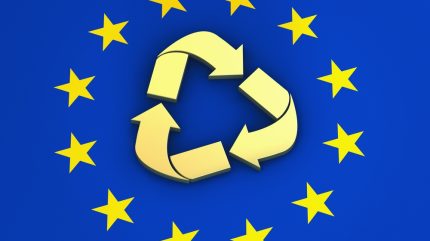
The European Parliament has passed new regulations aimed at significantly reducing packaging waste across the EU.
These measures, approved by a substantial majority of 476 votes to 129, with 24 abstentions, are set to transform packaging waste management in Europe.
Key measures and targets
In 2021, the EU generated 84 million tonnes of packaging waste, a substantial increase from 66 million tonnes in 2009.
The new regulations introduce comprehensive measures covering the entire life cycle of packaging.
Central to these measures are ambitious reduction targets: a 5% reduction by 2030, 10% by 2035, and 15% by 2040.
These targets aim to significantly cut plastic packaging waste, addressing its growing environmental impact.
The legislation also sets a maximum empty space ratio of 50% for grouped, transport, and e-commerce packaging.
Manufacturers and importers are required to minimise the weight and volume of packaging to tackle unnecessary waste.
Bans on single-use plastics and hazardous chemicals
From 1 January 2030, certain single-use plastic packaging types will be banned.
This includes packaging for unprocessed fresh fruits and vegetables, food and beverages consumed in cafés and restaurants, individual condiment portions, miniature toiletry packaging in accommodations, and lightweight plastic carrier bags.
The regulations prohibit the use of ‘forever chemicals’ in food contact packaging above specified thresholds to protect public health.
Encouraging reuse and refill
The new rules set specific reuse targets for 2030, encompassing packaging for alcoholic and non-alcoholic beverages, transport and sales packaging, and grouped packaging.
Member states can apply for a five-year derogation under certain conditions.
Beverage and takeaway food distributors must offer consumers the option to bring their own containers and aim to provide 10% of products in reusable packaging by 2030.
Boosting recycling efforts
All packaging, excluding lightweight wood, cork, textile, rubber, ceramic, porcelain, and wax, must meet strict recyclability criteria.
The legislation mandates minimum recycled content targets for plastic packaging and sets recycling targets by weight of packaging waste.
By 2029, 90% of single-use plastic and metal beverage containers up to three litres must be collected separately through deposit-return systems or equivalent solutions.
Industry and consumer participation
Rapporteur Frédérique Ries highlighted the innovative nature of the new rules, noting that for the first time, the EU is setting targets to reduce packaging regardless of the material.
The regulations aim to foster innovation and include exemptions for microenterprises.
Ries emphasised the importance of industry and consumer participation in reducing excess packaging and hailed the ban on forever chemicals as a significant victory for consumer health.
Next steps for legislation
The European Council must formally approve the agreement before the measures can take effect.
This landmark legislation represents a crucial step in the EU’s efforts to build a circular economy, reduce waste, and eliminate non-sustainable packaging.





